Skin cancer screening refers to the process of investigating your body to check for skin cancer. During this screening procedure, various skin problems can be detected to prevent cancer. Skin cancer is a common disease that can be seen spreading among people of all races. There are different types of skin cancer which are melanoma, actinic keratoses, basal cell carcinoma, and squamous cell carcinoma. The most common form of skin cancer includes basal cell carcinoma and squamous cell carcinoma. On the other hand, melanoma is the deadliest form of skin cancer. An early examination by the doctor is always suggested because the spreading of skin cancer can prove to be fatal for your life. For example, during an examination, if melanoma is identified then an early treatment will save the patient’s life. A routine examination is required by a dermatologist to keep a check whether you are affected by any form of skin cancer or not.
A skin cancer screening is usually performed by a dermatologist. At the same time, a skin cancer specialist Singapore also creates awareness about the various methods used to detect and prevent skin cancer. A skin cancer screening in Singapore will cost you only 10 minutes. Such screenings can be performed by any healthcare professional and doctors apart from a dermatologist. It is usually recommended that a person must undergo an entire body checkup. If the unexposed parts are difficult to check then at least the hands, legs, neck and the ear must be examined. If cancer is detected then biopsy and other tests are recommended to the patient for confirmation of the disease.
The consultation fee that the dermatologist in Singapore usually charge varies between $ 80 and $ 150.
Treatment cost
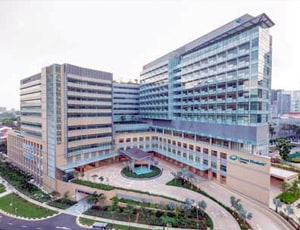
Mount Elizabeth Novena Hospital located in Novena, Singapore is accredited by JCI. Also listed below are some of the most prominent infrastructural details:
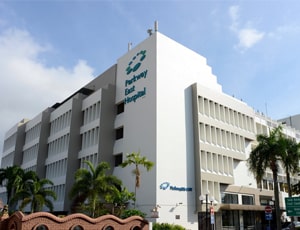
Parkway East Hospital located in Joo Chiat Pl, Singapore is accredited by JCI. Also listed below are some of the most prominent infrastructural details:
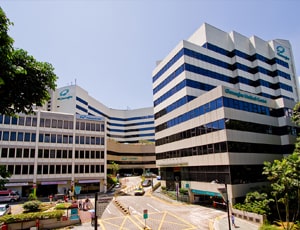
Gleneagles Hospital located in Napier Road, Singapore is accredited by JCI. Also listed below are some of the most prominent infrastructural details:

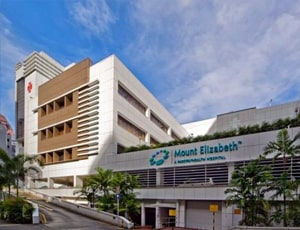
Mount Elizabeth Hospital located in Singapore, Singapore is accredited by JCI. Also listed below are some of the most prominent infrastructural details:
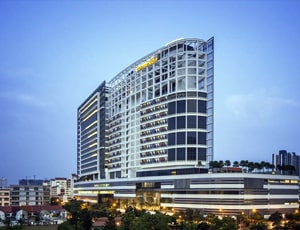
Apart from in-detail treatment procedures available, Farrer Park Hospital located in Connexion, Singapore has a wide variety of facilities available for International Patients. Some of the facilities which are provided by them are Accommodation, Airport Transfer, Choice of Meals, Interpreter, SIM, TV inside room. Also listed below are some of the most prominent infrastructural details:

Types of Skin Cancer Treatment in Sarvodaya Hospital and Research Centre and its associated cost
| Treatment Option | Approximate Cost Range (USD) | Approximate Cost Range (INR) |
|---|---|---|
| Skin Cancer Treatment (Overall) | 2030 - 6083 | 165690 - 501447 |
| Excisional Surgery | 507 - 1526 | 41740 - 124825 |
| Mohs Surgery | 1014 - 3038 | 83428 - 248978 |
| Curettage and Electrodesiccation | 405 - 1213 | 33423 - 100312 |
| Radiation Therapy | 2028 - 5074 | 166207 - 418164 |
| Topical Chemotherapy | 304 - 815 | 25049 - 66491 |
| Photodynamic Therapy | 609 - 1519 | 50060 - 124647 |
| Immunotherapy | 2545 - 5062 | 208603 - 417328 |
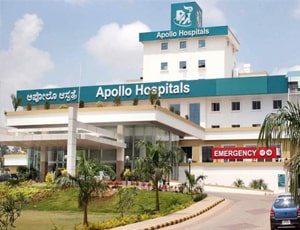
Types of Skin Cancer Treatment in Apollo Hospitals Bannerghatta and its associated cost
| Treatment Option | Approximate Cost Range (USD) | Approximate Cost Range (INR) |
|---|---|---|
| Skin Cancer Treatment (Overall) | 2212 - 6825 | 183144 - 562130 |
| Excisional Surgery | 569 - 1661 | 45567 - 140253 |
| Mohs Surgery | 1145 - 3347 | 93292 - 278933 |
| Curettage and Electrodesiccation | 446 - 1344 | 36856 - 110585 |
| Radiation Therapy | 2245 - 5600 | 188487 - 455751 |
| Topical Chemotherapy | 331 - 881 | 27427 - 74625 |
| Photodynamic Therapy | 679 - 1714 | 55223 - 138907 |
| Immunotherapy | 2819 - 5727 | 231870 - 453944 |
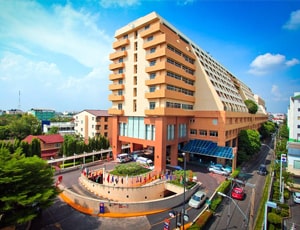
Types of Skin Cancer Treatment in Vejthani Hospital and its associated cost
| Treatment Option | Approximate Cost Range (USD) | Approximate Cost Range (THB) |
|---|---|---|
| Skin Cancer Treatment (Overall) | 4564 - 10186 | 158666 - 359718 |
| Excisional Surgery | 344 - 1714 | 11992 - 61427 |
| Mohs Surgery | 685 - 3340 | 24098 - 117808 |
| Curettage and Electrodesiccation | 222 - 1123 | 8103 - 40593 |
| Radiation Therapy | 1326 - 4527 | 47862 - 157395 |
| Topical Chemotherapy | 223 - 782 | 7951 - 28613 |
| Photodynamic Therapy | 456 - 1694 | 16186 - 59992 |
| Immunotherapy | 2059 - 5676 | 72759 - 202198 |
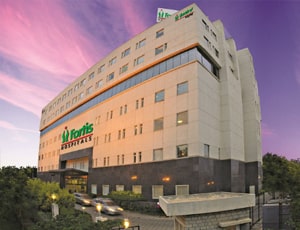
Types of Skin Cancer Treatment in Fortis Hospital and its associated cost
| Treatment Option | Approximate Cost Range (USD) | Approximate Cost Range (INR) |
|---|---|---|
| Skin Cancer Treatment (Overall) | 2039 - 6061 | 166253 - 499662 |
| Excisional Surgery | 509 - 1516 | 41570 - 124258 |
| Mohs Surgery | 1012 - 3037 | 83434 - 249921 |
| Curettage and Electrodesiccation | 406 - 1217 | 33363 - 99431 |
| Radiation Therapy | 2023 - 5082 | 166388 - 415070 |
| Topical Chemotherapy | 304 - 815 | 24992 - 66506 |
| Photodynamic Therapy | 611 - 1516 | 49969 - 124860 |
| Immunotherapy | 2527 - 5096 | 208885 - 414921 |
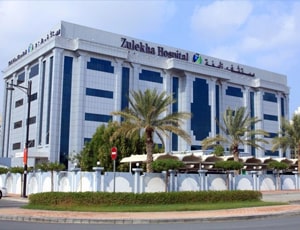
Types of Skin Cancer Treatment in Zulekha Hospital Dubai and its associated cost
| Treatment Option | Approximate Cost Range (USD) | Approximate Cost Range (AED) |
|---|---|---|
| Skin Cancer Treatment (Overall) | 7928 - 16605 | 28411 - 60832 |
| Excisional Surgery | 449 - 2283 | 1637 - 8077 |
| Mohs Surgery | 1125 - 6671 | 4180 - 24438 |
| Curettage and Electrodesiccation | 331 - 1682 | 1215 - 6187 |
| Radiation Therapy | 1660 - 5657 | 6305 - 20723 |
| Topical Chemotherapy | 336 - 888 | 1225 - 3374 |
| Photodynamic Therapy | 676 - 2295 | 2430 - 8322 |
| Immunotherapy | 2775 - 8844 | 10395 - 33650 |
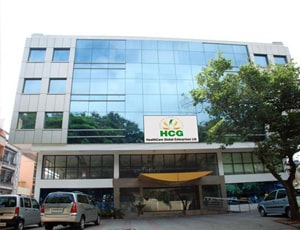
Types of Skin Cancer Treatment in HCG Kalinga Rao Road and its associated cost
| Treatment Option | Approximate Cost Range (USD) | Approximate Cost Range (INR) |
|---|---|---|
| Skin Cancer Treatment (Overall) | 2030 - 6092 | 165804 - 499083 |
| Excisional Surgery | 507 - 1516 | 41668 - 125222 |
| Mohs Surgery | 1014 - 3043 | 83098 - 249753 |
| Curettage and Electrodesiccation | 408 - 1220 | 33207 - 99726 |
| Radiation Therapy | 2025 - 5078 | 165730 - 416519 |
| Topical Chemotherapy | 303 - 815 | 24874 - 66276 |
| Photodynamic Therapy | 606 - 1526 | 50006 - 124496 |
| Immunotherapy | 2550 - 5092 | 208576 - 417210 |
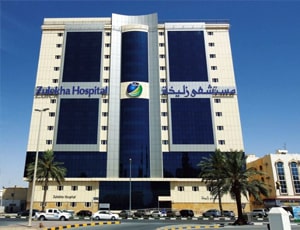
Types of Skin Cancer Treatment in Zulekha Hospital Sharjah and its associated cost
| Treatment Option | Approximate Cost Range (USD) | Approximate Cost Range (AED) |
|---|---|---|
| Skin Cancer Treatment (Overall) | 7892 - 16646 | 28482 - 63148 |
| Excisional Surgery | 448 - 2206 | 1616 - 8084 |
| Mohs Surgery | 1109 - 6812 | 4145 - 24581 |
| Curettage and Electrodesiccation | 340 - 1654 | 1263 - 6301 |
| Radiation Therapy | 1688 - 5670 | 6130 - 20953 |
| Topical Chemotherapy | 344 - 904 | 1224 - 3345 |
| Photodynamic Therapy | 681 - 2296 | 2464 - 8360 |
| Immunotherapy | 2846 - 9163 | 10148 - 33729 |
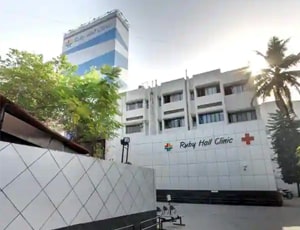
Types of Skin Cancer Treatment in Ruby Hall Clinic and its associated cost
| Treatment Option | Approximate Cost Range (USD) | Approximate Cost Range (INR) |
|---|---|---|
| Skin Cancer Treatment (Overall) | 1881 - 5599 | 153627 - 465303 |
| Excisional Surgery | 474 - 1389 | 38413 - 114654 |
| Mohs Surgery | 930 - 2784 | 77491 - 231484 |
| Curettage and Electrodesiccation | 369 - 1135 | 30789 - 91887 |
| Radiation Therapy | 1851 - 4658 | 150898 - 381532 |
| Topical Chemotherapy | 278 - 760 | 23260 - 61969 |
| Photodynamic Therapy | 565 - 1416 | 46431 - 115778 |
| Immunotherapy | 2333 - 4647 | 194580 - 385140 |
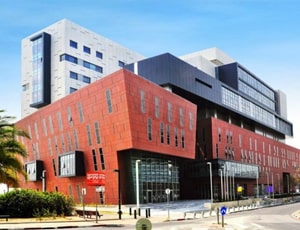
Assuta Hospital located in Tel-Aviv, Israel is accredited by JCI. Also listed below are some of the most prominent infrastructural details:
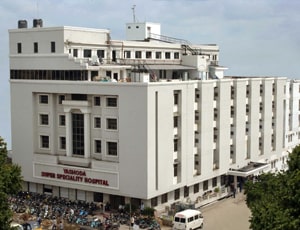
Types of Skin Cancer Treatment in Yashoda Hospital, Malakpet and its associated cost
| Treatment Option | Approximate Cost Range (USD) | Approximate Cost Range (INR) |
|---|---|---|
| Skin Cancer Treatment (Overall) | 2030 - 6111 | 167143 - 497681 |
| Excisional Surgery | 508 - 1526 | 41466 - 124255 |
| Mohs Surgery | 1016 - 3060 | 83234 - 249856 |
| Curettage and Electrodesiccation | 405 - 1222 | 33142 - 99643 |
| Radiation Therapy | 2022 - 5054 | 167259 - 415149 |
| Topical Chemotherapy | 304 - 812 | 25027 - 66634 |
| Photodynamic Therapy | 608 - 1517 | 50070 - 124292 |
| Immunotherapy | 2533 - 5096 | 208277 - 415506 |
Skin cancer is the most common type of cancer. It typically affects people with lighter skin tones. It is the uncontrolled and abnormal growth of destructive malignant skin cells. It occurs when unrepairable DNA damage that occurs in the skin cells triggers a mutation that makes them multiply rapidly and form malignant skin tumors.
Skin cancer is mostly caused by ultraviolet radiation from sunshine or tanning beds. Skin cancers have a limited potential to spread to other parts of the body and may become life-threatening if not treated on time. They are common and can be effectively treated but the treatment of some forms of skin cancers can be difficult. However, early diagnosis and treatment can increase the survival rate.
The following are the three common types of skin cancers:
Several effective skin cancer treatment modalities are available, and the choice of treatment depends on the type of skin cancer, its location, the patient's age, general health, and whether the cancer is primary or recurrent. Your dermatologist will select the most suitable treatment based on these factors.
Common skin cancer treatment options include:
Electrodesiccation (EDC)
Electrodesiccation and curettage (EDC) involves destroying skin cancer with electrodesiccation and curettage. This treatment is fast, easy, and less expensive compared to other options. The affected skin area is numbed with a local anesthetic and scraped repeatedly with a sharp instrument called a curette. The edge is then cauterized with an electric needle.
Surgery is more complex and expensive than EDC. During this procedure, the surgeon numbs the affected area with a local anesthetic, fully removes the malignant skin tissues, and closes the wound edges with sutures. Surgery has a higher cure rate and typically results in a more cosmetically acceptable scar than EDC.
Mohs surgery is a microscopically controlled treatment for common types of skin cancer. The surgeon removes layers of tissue and examines them under a microscope to check for cancer cells, continuing this process until no cancer cells remain.
Radiation therapy is an option for patients who are not suitable for surgery, such as the elderly. However, the treated area cannot be tested to ensure that all cancer is gone, and the radiation scar may worsen over time.
For basal cell skin cancer, topical treatments such as gels, creams, and solutions can be used to reduce cancerous cells.
Chemotherapy drugs, such as fluorouracil (5-FU), can be administered orally to treat skin cancer. These drugs work by stimulating the body's immune system to produce interferon, which attacks the cancer cells.
Alternative therapies include the use of herbs, vitamins, special diets, acupuncture, or massage. While alternative therapy cannot completely treat skin cancer on its own, it can help reduce the severity of symptoms.
Recovery after skin cancer treatment varies depending on the type and extent of the treatment.
Generally, patients may experience mild pain, swelling, or redness at the treatment site, which can be managed with prescribed medications and proper wound care. Follow-up appointments are crucial to monitor healing and check for any signs of recurrence. It's also important to practice good sun protection to prevent further skin damage.
Ask your healthcare adviser for the best multiple options and choose the one that meets your expectations
The Skin Cancer Treatment package cost in Singapore varies from one hospital to another and may offer different benefits. Some of the best hospitals for Skin Cancer Treatment offer a comprehensive package that covers the end-to-end expenses related to investigations and treatment of the patient. Typically, the package cost of Skin Cancer Treatment in Singapore includes the expenses related to the surgeon's fee, anesthesia, hospital, meals, nursing and ICU stay. Extended hospital stay, complications after the surgery or new diagnosis may affect the overall cost of Skin Cancer Treatment in Singapore.
There are many hospitals that perform Skin Cancer Treatment in Singapore. The following are some of the most renowned hospitals for Skin Cancer Treatment in Singapore:
The recovery of the patient many vary, depending on several factors. However, on an average, patient is supposed to stay for about 25 days in the country after discharge. This duration of stay is recommended to complete all the necessary follow-ups and control tests to ensure that the surgery was successful.
Apart from the cost of Skin Cancer Treatment, the patient is also required to pay additionally for daily meals and guest house accommodation. These charges starts from USD 50 per person.
Some of the cpopular cities in Singapore that offer Skin Cancer Treatment include the following:
The patient is supposed to stay at the hospital for about 4 days after Skin Cancer Treatment for monitoring and care. The patient is subjected to several biochemistry and radiological scans to see that everything is okay and the recovery is on track. After making sure that patient is clinically stable, discharge is planned.
The average rating for Skin Cancer Treatment hospitals in Singapore is 2.7. This rating is automatically calculated on the basis of several parameters such as the infrastructure of the hospital, quality of services, nursing support and other services.
There are more than 5 hospitals that offer Skin Cancer Treatment in Singapore. These hospitals have propoer infrastructure as well as offer good quality of services when it comes to Skin Cancer Treatment Additionally, these hospitals are known to comply with the international standards as well as local legal requirements for the treatment of patients.
Some of the most sought after medical specialists for Skin Cancer Treatment in Singapore are: